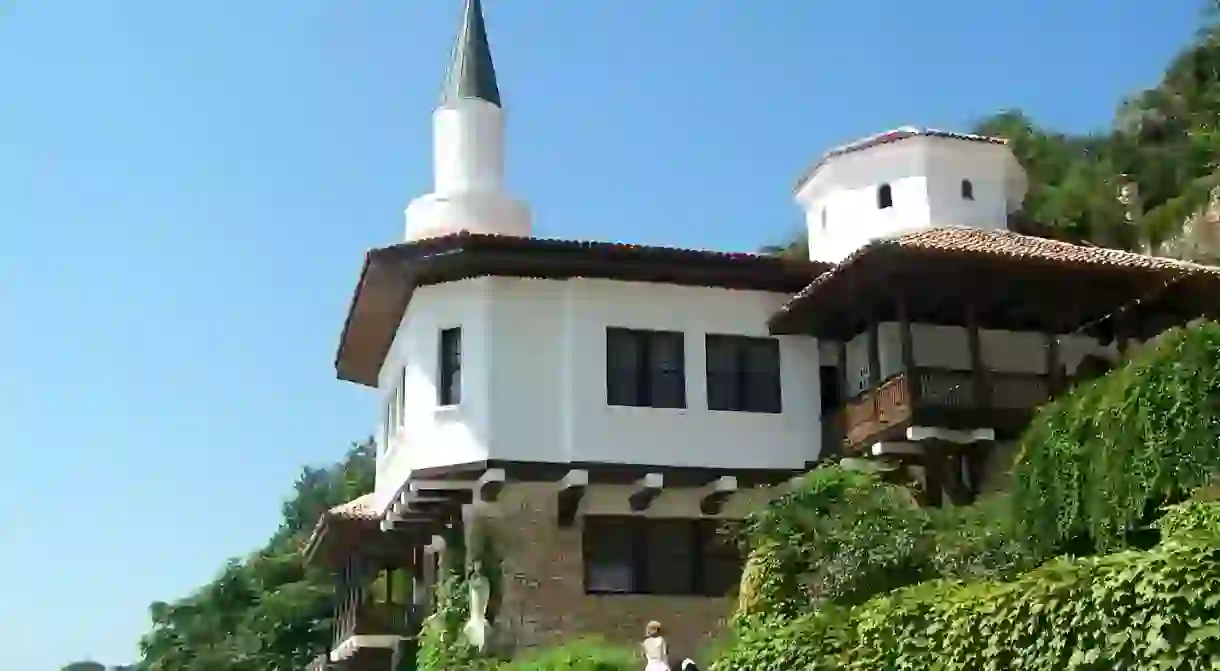The Most Fascinating Small Towns to Visit in Bulgaria

According to Bulgarian law, a ‘small town’ has fewer than 30,000 inhabitants, while a ‘very small town’ is one with fewer than 10,000 inhabitants. If you want to delve deeper into the Balkan state and truly understand it, add a few of these charming historical settlements to your Bulgarian itinerary.
Melnik
Melnik is officially the smallest town in Bulgaria, with fewer than 400 inhabitants according to the latest census. It is also known as the town of Bulgarian winemakers and the capital of the Melnik wine region. Highlights of your visit should include the scenic vineyards and white curves of the Melnik Earth Pyramids surrounding it. While you walk along the streets, friendly locals will offer you their homemade wine and local produce. The area is full of wineries happy to open their doors and cellars for visitors. Follow the Melnik Wine Route for a pre-organized itinerary of the region’s vineyards and tasting rooms.

Koprivshtitsa
Koprivshtitsa is the heart of Bulgarian Revival architecture. In the 19th century, the town was at the center of the April Uprising, one of the most important revolutions in Bulgarian history. Walk down ancient cobbled streets lined with colorful 200-year-old houses, many of which have been turned into museums – peek inside to get an idea of what life used to be like almost two centuries ago. It’s easily accessible, making Koprivshtitsa one of the most popular day trips from Sofia and Plovdiv.

Lovech
Lovech is another hidden gem worth visiting on your trip around Bulgaria’s small towns. It’s home to the only covered bridge in Bulgaria built by the prominent 19th-century architect Kolyu Ficheto. The bridge is surrounded by a kaleidoscope of colorful houses on both sides of the Osam River. Start your tour of Lovech here before climbing up the steep labyrinth of cobblestone streets towards the town’s old section. Here you can explore the town’s historical Revival houses (some of them accessible as museums) covered in lush greenery. Climb all the way up to the top of the hill to see Lovech from the foot of the gigantic monument of the Bulgarian national hero Vasil Levski, or explore the medieval fortress right next to it.

Tryavna
The town has long been known for its woodcarving and icon painting masters. Tryavna’s artists have a unique style you will quickly learn to recognize. Take a walk along the craftsmen street where craftsmen create their masterpieces of wood and leather. Stop off and admire some of the galleries and then continue to the clock tower that makes an impressive photo opportunity. It’s worth spending a night in Tryavna instead of rushing to your next destination. The quiet mornings over a cup of coffee here are priceless.

Ivaylovgrad
Ivaylovgrad used to be one of the main silk farming centers in Bulgaria until synthetic silk was introduced. Long before that, in the middle of the 1st century AD, it was the place where a rich Roman governor built his sumptuous palace villa. You can still find traces of the Roman governor’s lavish lifestyle through one of the best preserved mosaics in Bulgaria. Visiting Villa Armira, as it’s known today, is reason enough to drive all the way here. Owing to its remote southern location and distance from other major attractions, Ivaylovgrad is an off-the-grid destination that rarely makes it onto typical road trip itineraries, making it the perfect place to experience true Bulgarian culture.

Balchik
Balchik is buzzing with people in the summer and a true off-the-beaten-path gem in winter. The small seaside town, located in the northern section of the Bulgarian Black Sea coast, is a magnet. It’s home to an eclectic palace complex that once belonged to the Romanian Queen Marie. It consists of residential buildings, beautiful gardens, and places of worship for several different religions since the queen was known for her spiritual searching. Right next to it, the Botanical Garden in Balchik will take you on a round-the-world trip through its vast collection of plants. The two attractions alone will take you almost a whole day to explore, after which you can spoil yourself with a dinner by the Yacht Port as the sun sets in the background.

Nessebar
Ever since the Bronze Age, Nessebar has been an important port on the Black Sea coast. Thracians, Ancient Greeks, and Romans have all left their marks in the town. While you amble in the old part of Nessebar today, it’s like a walk through the centuries. Many historical churches (mainly from the 12th and 13th centuries) still dot its streets, and you can also see samples of the typical seaside wood-and-stone Revival houses. Many of these houses are restaurants and family hotels, which means you can spend time in them and absorb the past.














